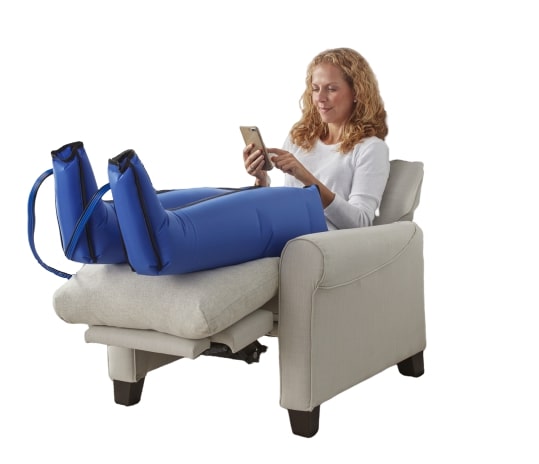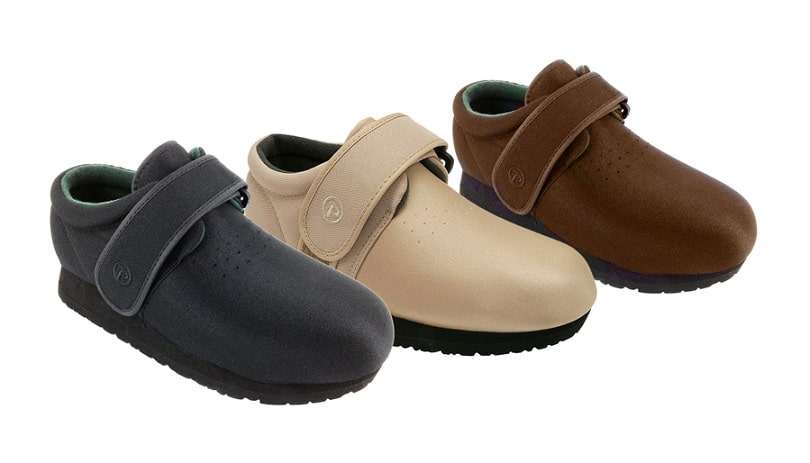Author: Jennifer Austin (BSc MS)
Lymphedema is a condition that requires constant effort to manage.
However managing these symptoms correctly can help you live life to the fullest.
But how can these symptoms be managed at home?
Here we will look at how to manage lymphedema at home.
How To Manage Lymphedema Symptoms At Home
Managing lymphedema at home involves the use of self-care practices to reduce swelling and prevent complications.
It is important to note that lymphedema is a chronic condition, and while self-care can help control the symptoms, it is essential to work with a healthcare professional for proper assessment and guidance.
Here are some ways you can manage lymphedema at home.
1/ Compression Therapy
Wearing compression garments, such as bandages or compression sleeves, helps to maintain pressure on the affected limb, preventing fluid build-up and reducing swelling.
Ensure that the compression garments are properly fitted, and wear them as instructed by your healthcare provider.
2/ Elevate the Affected Limb
Elevating the affected limb above heart level can help reduce swelling by promoting fluid drainage.
Try to elevate the limb several times a day, especially when resting or sleeping.
3/ Exercise Regularly
Engaging in light, low-impact exercises can stimulate the lymphatic system and aid in fluid circulation.
Consult with a lymphedema therapist or physical therapist (physiotherapist) to develop a safe and suitable exercise routine for your condition.
Check out our articles for exercise advice by following this link.
4/ Skin Care
Keep your skin clean, moisturized, and protected from scratches, cuts, or insect bites.
Use a pH-balanced lotion to maintain skin integrity and prevent infections.
Avoid extreme temperatures, such as hot baths or ice packs, as they can worsen swelling.
You can check out our article on skin care for lymphedema by clicking here.
5/ Healthy Diet
Eat a well-balanced diet rich in fruits, vegetables, and whole grains while limiting sodium intake.
Excess sodium can lead to water retention and worsen lymphedema swelling.
You can check out our lymphedema diet hints and tips on this page.
6/ Think About Your Clothing
Avoid tight clothing and jewelry as these can constrict lymph flow in the body, and exacerbate lymphedema.
Choose loose-fitting clothes and avoid wearing anything that leaves marks on your skin.
If you are looking for advice on the correct footwear to wear for lymphedema, then we have an article on this subject which you can view via this link.
7/ Weight Management
If you are overweight, losing weight may help reduce the burden on your lymphatic system and improve lymphedema symptoms.
However, avoid extreme weight loss diets or rapid weight changes.
8/ Stay Active
Avoid prolonged periods of inactivity or sitting.
Regular movement and circulation are essential for managing lymphedema.
9/ Leg Compression Machines
A convenient way to reduce swelling in legs at home is through the use of leg compression machines.
These are wearable sleeves for the legs that automatically massage the lymph fluid away from the legs.
Check out our article on these machines by clicking this link here.

10/ Avoid Infections
Take precautions to prevent infections in the affected limb.
Keep the limb clean, moisturized, and protected.
If you notice any signs of infection (redness, warmth, increased swelling, fever), seek medical attention immediately.
Check out our article on skin care products which may help you avoid infection by following this link.
11/ Manual Lymphatic Drainage (MLD) Techniques
Learn and perform gentle MLD techniques, which are specialized massages designed to encourage lymph flow and reduce swelling.
It is crucial to be trained by a certified therapist to perform these techniques correctly.

12/ Seek Professional Advice
Regularly consult with a lymphedema therapist or healthcare provider experienced in managing lymphedema.
They can assess your condition, recommend adjustments to your self-care routine, and provide guidance on managing symptoms effectively.
Conclusion
Hopefully this article has given you a better idea of how you can manage your lymphedema symptoms at home.
Check out more articles like this on lymphedemalifeline.org.
Disclaimer – The information on this website is for informational purposes only. Lymphedemalifeline.org and it’s staff, writers, etc. assumes no responsibility for any consequences arising from any use made of, or any reliance on, the information contained on this website.



